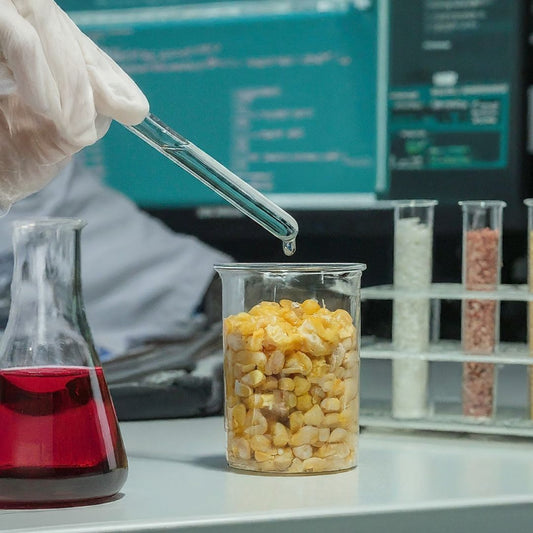A Rare Pulsar Discovery in an Ancient Star Cluster: India’s GMRT Leads the Way
Share
[1:25 pm, 20/9/2025] Janani intern: The cosmos never ceases to surprise us. Recently, astronomers using India’s upgraded Giant Metrewave Radio Telescope (uGMRT) near Pune uncovered a celestial gem—a rare millisecond pulsar hidden in the dense stellar environment of the globular cluster Messier 80 (M80). This marks the first pulsar ever discovered in this ancient cluster, adding a fascinating piece to the puzzle of stellar evolution and cosmic dynamics.
What Was Found
The newly discovered object, named PSR J1617−2258A, is a millisecond pulsar (MSP) that spins at an astonishing rate of 232 times per second. Pulsars are neutron stars—the ultra-dense remnants of supernova explosions—that emit beams of radio waves like cosmic lighthouses. Millisecond pulsars, in particular, are “recycled” through interactions with companion stars, spun up to blistering speeds by accreting matter.
A Unique Binary System
What makes this pulsar especially rare is its binary orbit:
It revolves around a low-mass companion star with an orbital period of about 19 hours.
Its orbit is highly eccentric (elliptical), which is unusual for millisecond pulsar systems, most of which have nearly circular orbits.
The total system mass is around 1.67 times the mass of the Sun, with the companion estimated at just ~0.07 solar masses.
This unusual configuration hints at a dramatic history of gravitational encounters inside the dense stellar population of M80.
Why It Matters
1. Testing Einstein’s Theory of Relativity
The eccentric orbit of PSR J1617−2258A causes its orbit to “precess” or shift over time—by about 0.5° per year. This effect provides an excellent laboratory to test predictions of general relativity in strong gravitational fields.
2. Shedding Light on Stellar Evolution
The discovery enriches our understanding of how binary systems evolve in crowded environments like globular clusters. Stellar fly-bys and gravitational interactions likely shaped this pulsar’s rare orbit.
3. A Window into Extreme Physics
Measuring the pulsar’s properties helps refine models of neutron star structure and the behavior of matter at nuclear densities.
4. Boost for Indian Astronomy
The fact that this breakthrough came from uGMRT highlights India’s growing role in cutting-edge astrophysics. The telescope’s sensitivity and reach make it a key player in international collaborations.
Who Discovered It
The discovery was made by Jyotirmoy Das, a PhD scholar at NCRA-TIFR, Pune, as part of the Globular Clusters GMRT Pulsar Search (GCGPS) project. This international effort involves leading institutions such as the Max Planck Institute (Germany), NRAO (USA), and the University of Oxford (UK).
Looking Ahead
Astronomers plan to monitor PSR J1617−2258A more closely to refine orbital data, probe relativistic effects, and uncover more about its companion. The find also raises hopes of detecting more hidden pulsars in other clusters, potentially contributing to pulsar timing arrays used in the hunt for gravitational waves.
Conclusion
The discovery of PSR J1617−2258A is more than just adding another pulsar to the catalog—it is a cosmic laboratory for studying gravity, stellar interactions, and the extremes of matter. With instruments like uGMRT, India is helping to push the boundaries of our understanding of the universe, one rare pulsar at a time.
[1:34 pm, 20/9/2025] Janani intern: Title:
🧬 Personalized Nutrition via DNA & Wearables – From Generic Diets to Precision Eating
We’ve all seen “one-size-fits-all” diets—but in reality, our bodies respond differently to the same foods. Personalized nutrition combines DNA testing, wearables, and AI to create diets tailored to individual biology.
🔹 DNA-Based Nutrition
Genetic testing can reveal how efficiently you metabolize nutrients.
Example: Nutrigenomix offers DNA-based reports on lactose intolerance, gluten sensitivity, caffeine metabolism, and vitamin absorption.
A person with a vitamin D receptor gene variant may need higher intake to achieve the same benefit as others.
🔹 Wearables & Real-Time Tracking
Devices like continuous glucose monitors (CGMs) or smartwatches capture blood sugar spikes, heart rate, sleep, and activity.
Example: Levels Health and Abbott’s Libre Sense CGMs show how your body reacts to specific foods. One person may spike after oats, while another remains stable—changing what’s considered a “healthy breakfast.”
🔹 AI + Data Integration
Platforms combine DNA + wearable insights to design personalized meal plans.
Example: ZOE (UK/US) runs microbiome, blood fat, and glucose tests, then recommends customized diets via an app.
DayTwo (Israel/US) uses gut microbiome sequencing to predict blood sugar responses and build personalized diets for diabetics.
🔹 Real-Life Use Cases
Athletes: DNA-based training + wearables for muscle recovery, hydration, and energy fueling. (Example: DNAfit offers sports nutrition plans).
Chronic Disease: Tailored diets for type 2 diabetes, obesity, and cardiovascular patients. (Example: Mayo Clinic is researching nutrigenomics-based interventions).
Everyday Wellness: Smartwatches could soon ping you: “Swap pasta for quinoa—your glucose is peaking.”
🌍 Why It Matters
Better Health: Cut risk of lifestyle diseases with food designed for your genes.
Sustainability: Avoid over-supplementation and unnecessary food waste.
Convenience: Get real-time, adaptive food guidance—directly on your phone or wearable.
✨ Imagine ordering food via a delivery app, and it auto-suggests meals based on your DNA, current blood sugar, and fitness goals. That’s where we’re heading.





